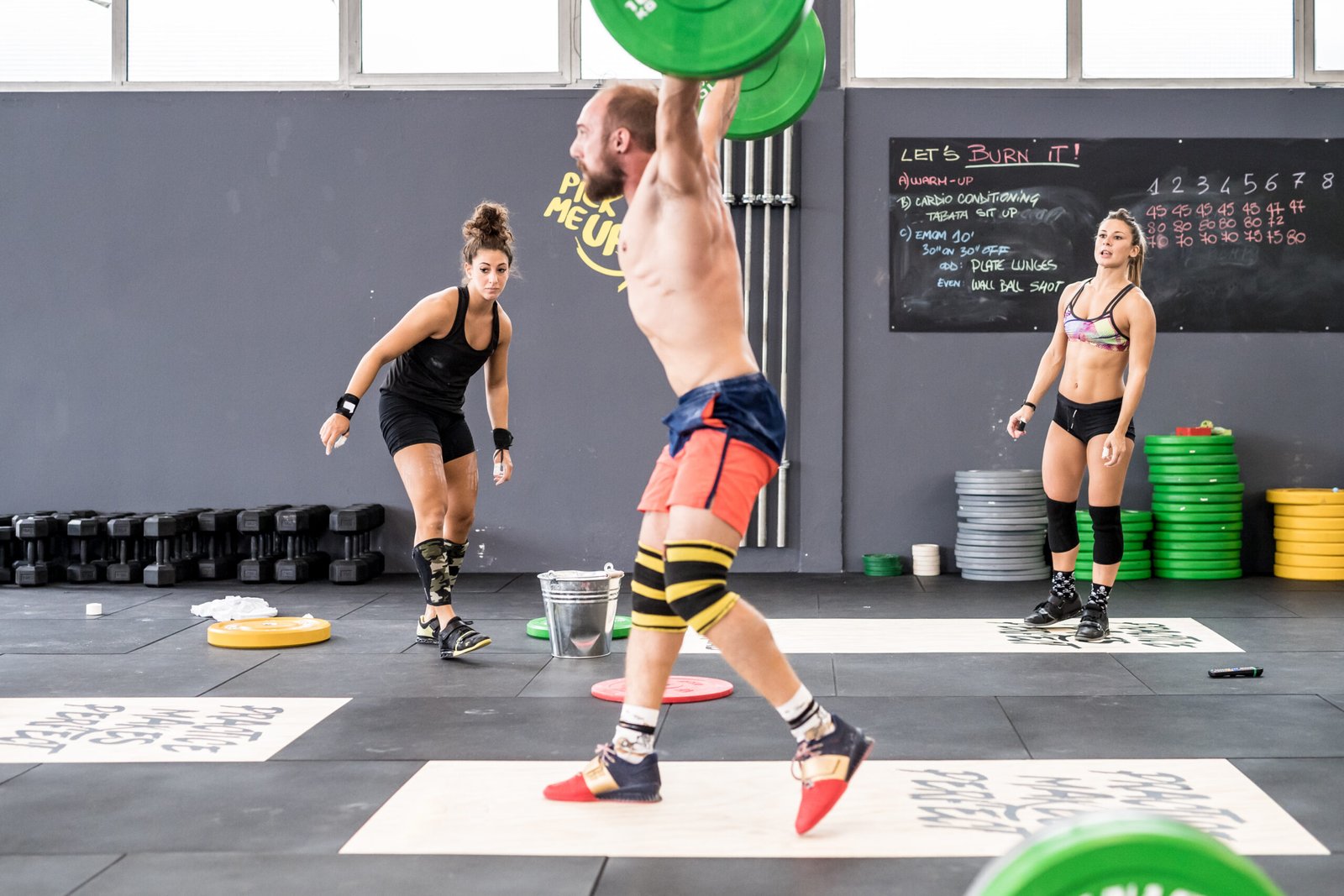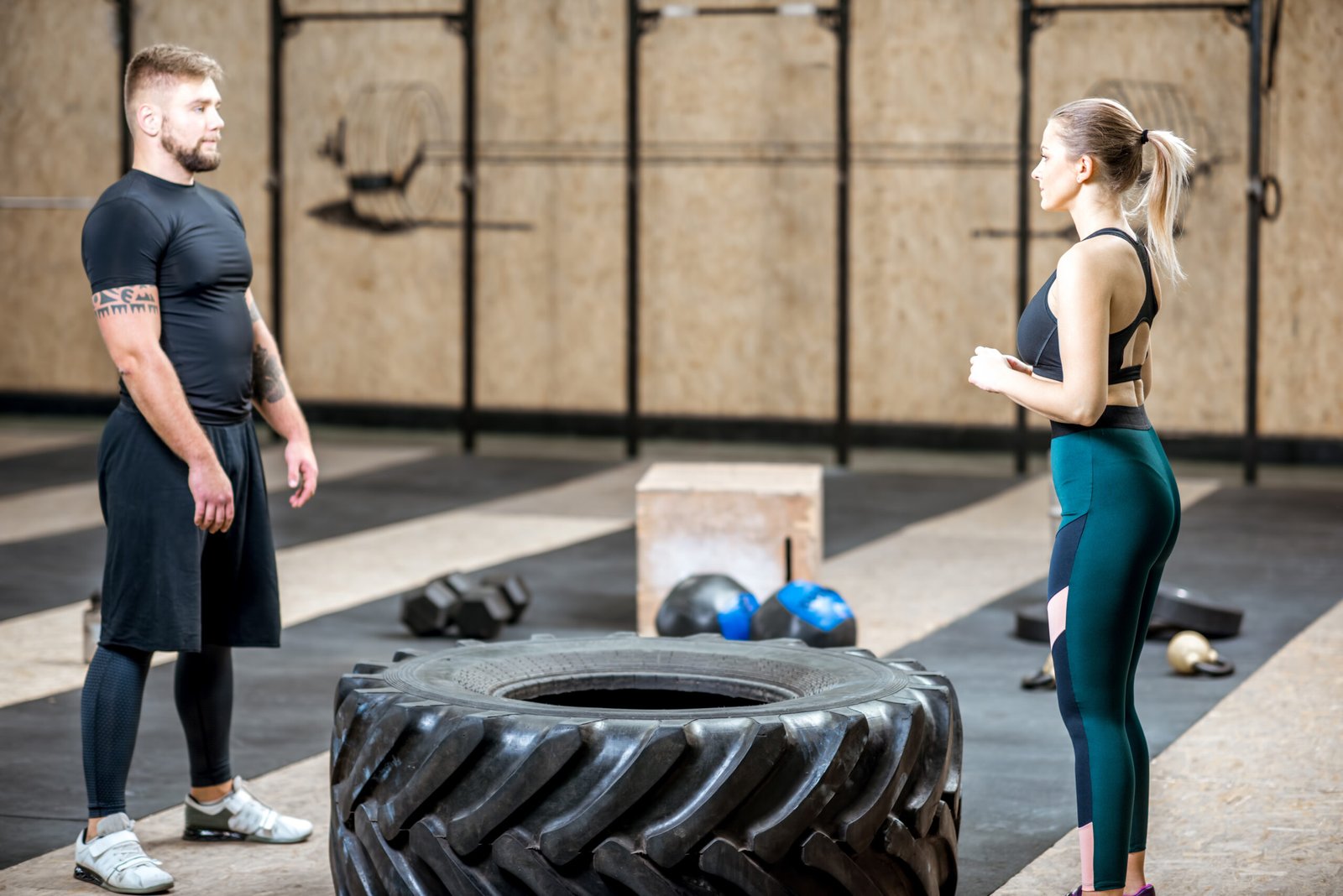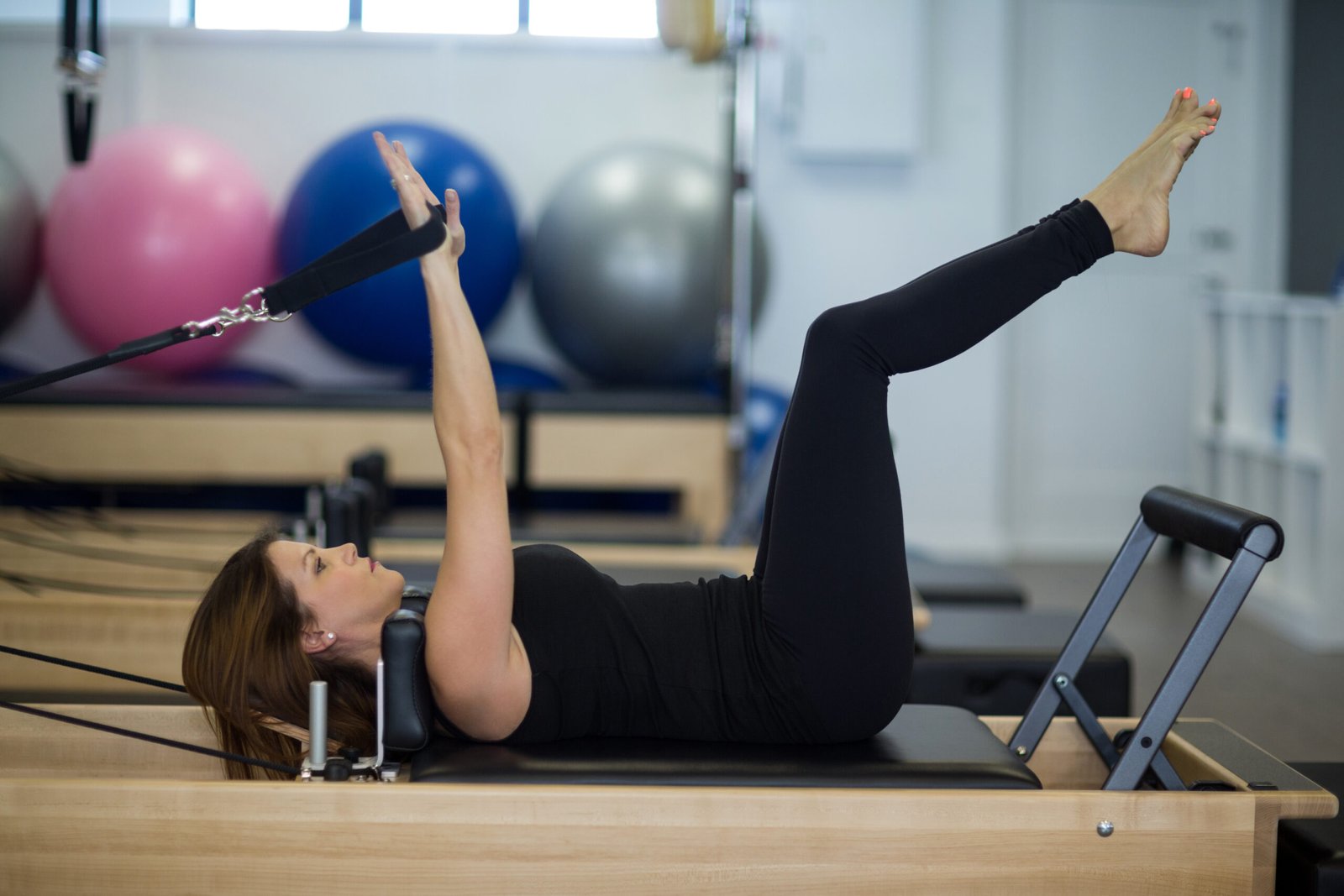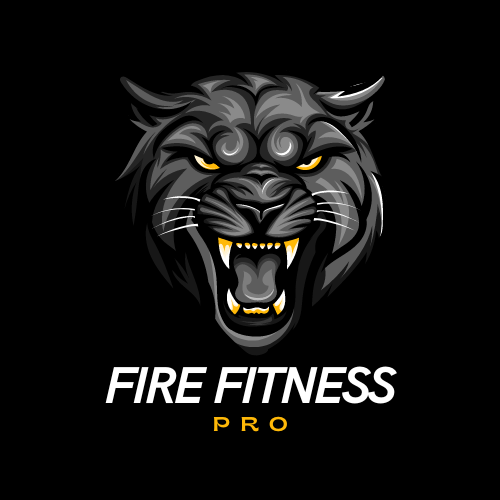In the high-intensity world of CrossFit, the merciless challenge of heavy lifting, explosive movements, and endurance testing can leave the body in need of repair. This is where The Role of Recovery in CrossFit: Techniques and Tips comes into sharp focus. Mastering recovery not only enhances performance but ensures longevity in your fitness journey. This blog post will unlock the secrets of pivotal recovery techniques, transforming your CrossFit regimen into one that maximizes efficacy while minimizing injury risk.
Recovery for CrossFit – 5 Best Strategies!
Proper recovery is not an optional extra in CrossFit; it’s a necessity. Without it, athletes risk burnout, injury, and stagnant performance. Here are five strategies to revolutionize your recovery routine and unleash your full potential.
| Tip | Description | Impact on Recovery |
|---|---|---|
| Aim for 7-9 hours of sleep per night | Ensure a consistent and adequate sleep schedule for muscle repair. | Promotes muscle repair, enhances protein synthesis. |
| Establish a consistent sleep schedule | Go to bed and wake up at the same time every day to regulate your circadian rhythm. | Reduces cortisol, improves quality of sleep. |
| Create a restful bedroom environment | Keep the room dark, quiet, and cool. | Enhances deep sleep, reduces disturbances. |
| Avoid caffeine and electronics before bed | Limit stimulant intake and screen time an hour before sleep. | Helps in falling asleep faster, improves sleep quality. |
| Practice relaxation before sleep | Engage in activities like yoga or meditation to wind down. | Reduces stress, promotes relaxation, and prepares for sleep. |
Prioritize Sleep to Support Muscle Repair
Sleep is fundamental for the recovery process, acting as the body’s natural repair mechanism. Ensuring you get at least 7-9 hours of quality rest each night is critical for muscle repair and restoration. During sleep, the body releases growth hormone, which facilitates protein synthesis and muscle growth. It’s also a time when cortisol levels decrease, which helps reduce inflammation and stress. Creating a sleep-conducive environment by maintaining a regular schedule and minimizing light and noise can significantly impact the quality of your rest.
– Aim for 7-9 hours of sleep per night
– Establish a consistent sleep schedule
– Create a restful bedroom environment—dark, quiet, and cool
– Avoid caffeine and electronics before bedtime
– Consider yoga or meditation to enhance relaxation before sleep
Incorporate Active Recovery Exercises
| Exercise | Type | Description | Benefits |
|---|---|---|---|
| Light jogging or brisk walking | Low-intensity cardio | Engage in a slow-paced run or brisk walk to stimulate circulation. | Reduces muscle stiffness, promotes blood flow to fatigued muscles. |
| Yoga or Pilates | Flexibility & strength | Gentle movements and stretches to enhance muscle flexibility and core strength. | Increases flexibility, reduces muscle tightness, improves range of motion. |
| Swimming | Low-impact workout | Full-body exercise with minimal joint stress. | Increases blood flow, reduces muscle soreness, provides full-body recovery. |
| Dynamic stretching | Flexibility | Perform stretches involving movement to warm up muscles. | Improves flexibility, reduces injury risk, enhances mobility. |
| Cycling at a moderate pace | Low-impact cardio | Pedal at a steady pace, focusing on slow and controlled movement. | Boosts circulation, helps flush out lactic acid, promotes recovery. |
Incorporating active recovery exercises can be a game-changer for CrossFit enthusiasts. Active recovery involves engaging in low-intensity activities that promote blood circulation and expedite muscle recovery. Activities such as light jogging, swimming, or yoga help reduce muscle stiffness and soreness, allowing you to train more effectively on high-intensity days. These exercises aid in flushing out metabolic waste products and delivering necessary nutrients to fatigued muscles, thereby enhancing recovery. A well-rounded recovery plan should integrate these methods to balance high-energy work and rest.
– Engage in light jogging or brisk walking
– Try yoga or Pilates to enhance flexibility and strength
– Include swimming for a low-impact, full-body workout
– Use dynamic stretching routines as part of your recovery day
– Incorporate cycling at a moderate pace
Use Foam Rolling and Stretching Regularly
| Technique | Target Area | Recommended Duration | Benefits |
|---|---|---|---|
| Foam Rolling | Quads, Hamstrings, IT Band | 1-2 minutes per area | Breaks up scar tissue, improves blood flow, reduces muscle tension. |
| Dynamic Stretching | Full Body | 5-10 minutes | Warms up muscles, increases range of motion, prevents injury. |
| Static Stretching | Quads, Hamstrings, Calves | 15-30 seconds per stretch | Lengthens muscles, improves flexibility, aids in muscle recovery. |
| Massage Ball | Problem areas (e.g., calves, shoulders) | 2-3 minutes per area | Target deep muscle knots, improve muscle elasticity, enhance recovery. |
| Band Stretching | Hips, Shoulders, Chest | 10-15 minutes | Provides deep muscle stretch, improves mobility, reduces stiffness. |
Foam rolling and stretching are indispensable tools in a CrossFit athlete’s recovery arsenal. Regular foam rolling helps break up scar tissue and improve blood flow, enhancing muscle recovery. Stretching complements these benefits by increasing flexibility and reducing muscular tightness. Together, these practices prevent injury and ensure muscles remain supple and ready for future exertion. They should form part of your post-workout routine as well as your rest day activities, fostering improved range of motion and muscular performance.
– Perform foam rolling to target knots in major muscle groups
– Incorporate a variety of stretches, including dynamic and static
– Focus on problem areas like quads, hamstrings, and calves
– Dedicate 10-20 minutes after workouts for stretching
– Use mobility tools like massage balls or bands for deeper muscle penetration
Stay Hydrated and Focus on Nutrition
| Nutrient | Recommendation | Benefits for Recovery |
|---|---|---|
| Water | Hydrate consistently throughout the day. | Maintains muscle function, prevents dehydration, reduces fatigue. |
| Protein (e.g., chicken, fish) | Consume protein-rich meals, post-workout shakes are ideal. | Supports muscle repair, enhances muscle growth, reduces soreness. |
| Carbohydrates (e.g., whole grains, fruits) | Include whole grains, fruits, and vegetables in meals. | Replenishes glycogen stores, provides sustained energy for workouts. |
| Healthy Fats (e.g., avocados, nuts) | Integrate healthy fats like nuts, seeds, and avocados into meals. | Supports joint health, provides energy, aids in reducing inflammation. |
| Antioxidants (e.g., berries, green tea) | Consume antioxidant-rich foods like berries and green tea. | Reduces inflammation, accelerates recovery, supports immune function. |
Nutrition and hydration are pillars of effective recovery—often overlooked yet crucial to performance. Consuming a balanced diet rich in protein, healthy fats, and carbohydrates supports muscle repair and energy levels. Moreover, adequate hydration is essential for maintaining muscle function and reducing fatigue. Post-workout nutrition should aim to replenish glycogen stores and provide proteins for muscle recovery. By focusing on hydration and nutrition, CrossFit athletes can enhance recovery and maintain their energy levels, essential for consistent training success.
– Hydrate consistently throughout the day with water and electrolytes
– Eat a balanced meal of proteins (chicken, fish), carbs (whole grains, fruits), and fats (nuts, avocados)
– Don’t skip post-workout meals for rapid recovery—consider a protein shake as an easy option
– Include antioxidant-rich foods to combat inflammation
– Monitor dietary habits and adjust based on your training load
Implement Rest Days Strategically
| Rest Day Activity | Type | Purpose | Recommendations |
|---|---|---|---|
| Active Rest (e.g., light walking) | Low-intensity movement | Keeps the body moving without stressing muscles. | Keep it light, focus on relaxation and circulation. |
| Sauna or Hot Tub | Recovery modality | Relieves muscle tension and promotes circulation. | Use after workouts or on rest days to soothe muscles and relax. |
| Mindfulness or Meditation | Mental recovery | Reduces stress and mental fatigue, promotes relaxation. | Practice for 10-15 minutes a day to reset mentally and reduce anxiety. |
| Massage or Foam Rolling | Muscle recovery | Helps release muscle tightness and reduce soreness. | Schedule a light massage or foam rolling session to target sore areas. |
| Unstructured Activity (e.g., hobbies) | Personal relaxation | Allows the body to rest while engaging in enjoyable activities. | Engage in non-physical activities that you enjoy, such as reading or crafts. |
Rest days are not an indulgence but a strategic element of any CrossFit training program. They allow the body’s systems to recover, reduce the risk of injury, and improve overall performance. Implementing rest days strategically ensures you can train at peak intensity without overreaching. By listening to your body’s signals and adapting your schedule accordingly, you’ll prevent burnout and foster long-term improvement. Embrace rest as part of your regimen to maintain motivation and prevent stagnation in your CrossFit journey.
– Schedule regular rest days—consider active rest with low-impact activities
– Use chronic pain or extreme fatigue as indicators to rest
– Allow for flexibility in training schedules to include unplanned rest when necessary
– Have recovery modalities, like saunas or massage, on rest days
– Shift focus to mental recovery with hobbies or mindfulness activities
The Importance of Recovery in CrossFit: Tips for Proper Rest and Rehabilitation
Understanding the significance of recovery in CrossFit leads to purposeful training and resilience over time. It ensures that athletes not only maximize their performance but minimize the risk of injury. Recovery isn’t just about physical rest; it’s about integrating strategies that collectively contribute to optimal function and readiness. By prioritizing sleep, nutrition, hydration, and mobility work, athletes can improve their recovery capacity and maintain the energy required for the demanding nature of CrossFit.

1. What is the importance of recovery in a CrossFit training regimen?
Recovery is the backbone of CrossFit training. Without it, athletes risk stalling their progress and accumulating injuries. Proper recovery allows the body to repair and strengthen, reducing fatigue and enhancing endurance, strength, and agility. Incorporating recovery into your routine helps manage increased training loads and intensity, preventing burnout and promoting sustainable progress. Beyond physical benefits, recovery supports mental health, staving off stress, and preventing burnout, which are critical for maintaining high motivation levels. These practices form the cornerstone of effective CrossFit performance.
2. Can you provide some effective recovery techniques specifically for CrossFit athletes?
CrossFit athletes can benefit from a range of recovery techniques tailored to increase flexibility, minimize muscle tension, and support comprehensive physical condition. Incorporate active recovery methods, such as yoga or light swimming, to enhance circulation. Alleviate muscle tension through foam rolling and dynamic stretching to promote faster recovery. Ensuring adequate hydration and nutrition play pivotal roles in muscle repair. Prioritize proper sleep routines to optimize physical and mental rejuvenation, while adding professional techniques, like sports massages or cryotherapy, for a deeper muscle recovery impact.
3. How can proper recovery enhance my performance and results in CrossFit?

Proper recovery is directly linked to enhanced performance and results in CrossFit due to its ability to reduce fatigue and prevent injuries. Effective recovery fosters a solid foundation for muscle repair and growth, which in turn boosts strength and performance levels. With increased energy and reduced fatigue, workouts become more efficient, allowing individuals to maintain mental focus and motivation. By embracing effective recovery practices, CrossFit enthusiasts can achieve sustained progress and superior long-term outcomes.
4. What are some common signs that I might need more emphasis on recovery in my CrossFit routine?
Certain signals suggest that recovery needs more emphasis in your routine. Persistent fatigue or a constant feeling of tiredness during workouts can point to insufficient recovery. Prolonged muscle soreness or stiffness after training indicates inadequate muscle recuperation. If there’s a noticeable dip in workout performance or strength, it’s time to prioritize recovery. Mental signs, such as increased irritability or lack of training motivation, are also indicators. Frequent injuries or slow healing times highlight the necessity for a more focused recovery strategy.
5. Are there any specific tips or best practices for incorporating recovery into my CrossFit schedule?

Incorporating recovery into your CrossFit schedule is crucial to maintaining optimal performance and preventing overtraining. Start by prioritizing adequate sleep each night to support muscle repair. Integrate active recovery days with low-impact activities like yoga or swimming for light movement. Utilize tools like foam rollers and massage guns to relieve muscle soreness and improve circulation. Ensure consistent hydration and a diet rich in protein and nutrients to aid recovery processes. Finally, listening to your body and regularly scheduling rest days will help maintain pace and progress.
Embrace Recovery for Sustained CrossFit Success
Harnessing the power of recovery is not just about reaching your goals; it’s about surpassing them with vigor and vitality. Effective recovery techniques fuel enhanced performance, promote mental well-being, and pave the path to lasting success in CrossFit. By prioritizing sleep, nutrition, active recovery, and rest days, alongside strategic training design, you unlock the potential for unstoppable performance. Remember, recovery isn’t a pause in your fitness journey—it’s a strategy that propels you forward.













